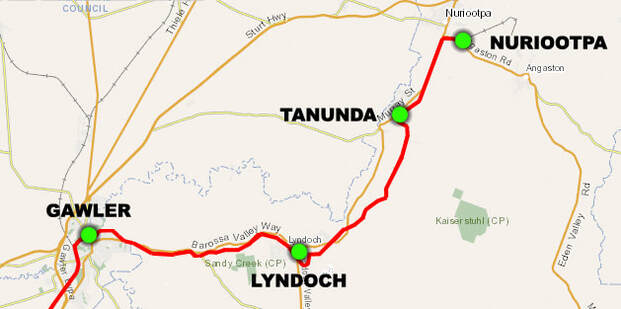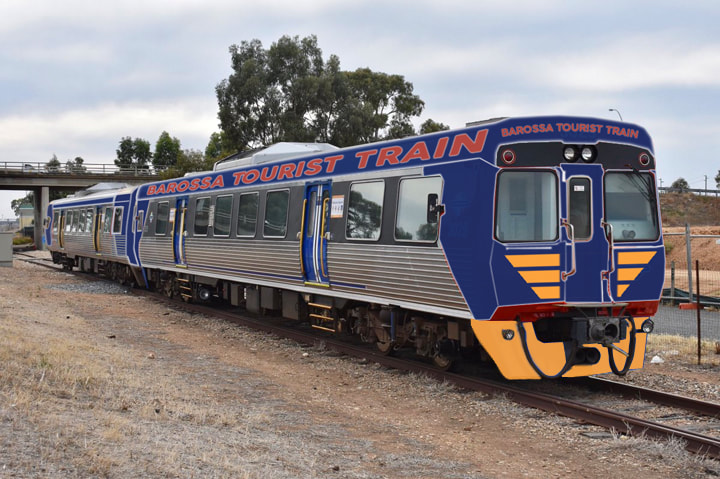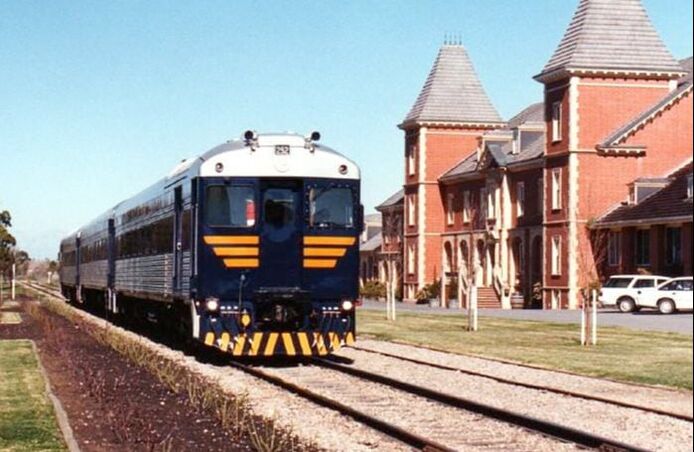OUR PLANS

The Barossa railway line wends its way from Gawler through the heart of the Barossa Valley to Nuriootpa, passing though Lyndoch in the Southern Barossa, then on to Tanunda in the Central Barossa, then on to Nuriootpa in the Northern Barossa.
The line, 33 kilometers long, was historically built to cater for passenger trains, but more recently evolved into a freight line, carrying ore from the Penrice mine (northeast of Nurootpa) to Port Adelaide.
Rail engineers believe the Gawler-to-Nuriootpa can be restored to 'heritage line' standard at moderate cost - a cost which MUST be met by the current Lessee of all non-metro rail lines, One Rail Australia.
Until 2014, the line facilitated the original Barossa Wine Train, which operated successfully until the world-wide commercial and insurance collapse brought on by the 9/11 disaster forced it to cease.
Following that, the Barossa Wine Train carriages were purchased by Mr John Geber (Proprietor of Chateau Tanunda) and placed into storage with the intent of having the BWT run again in the future.
To read why this opportunity has not progressed - and why this campaign is necessary - can be viewed on this site's 'The politics' page.
The line, 33 kilometers long, was historically built to cater for passenger trains, but more recently evolved into a freight line, carrying ore from the Penrice mine (northeast of Nurootpa) to Port Adelaide.
Rail engineers believe the Gawler-to-Nuriootpa can be restored to 'heritage line' standard at moderate cost - a cost which MUST be met by the current Lessee of all non-metro rail lines, One Rail Australia.
Until 2014, the line facilitated the original Barossa Wine Train, which operated successfully until the world-wide commercial and insurance collapse brought on by the 9/11 disaster forced it to cease.
Following that, the Barossa Wine Train carriages were purchased by Mr John Geber (Proprietor of Chateau Tanunda) and placed into storage with the intent of having the BWT run again in the future.
To read why this opportunity has not progressed - and why this campaign is necessary - can be viewed on this site's 'The politics' page.
OUR VISION
We propose a new Barossa Tourist Train would employ SA's 3000-Class trains, currently in use on Adelaide's metro rail lines.
Many of these trains will become 'surplus to requirements' when the Adelaide to Gawler line is electrified and are scheduled to be scrapped, despite the fact that they are perfect mechanically and are certified to run on SA's rail network.
The current (old) Bluebird Wine Train set languishes at the National Rail Museum. IF they can be refurbished (a very expensive task) - AND certified to run on Adelaide's main rail lines, the Bluebirds could be used on the 'heritage track' but would unlikely to be certified to run from Adelaide to Gawler.
We propose a new Barossa Tourist Train would employ SA's 3000-Class trains, currently in use on Adelaide's metro rail lines.
Many of these trains will become 'surplus to requirements' when the Adelaide to Gawler line is electrified and are scheduled to be scrapped, despite the fact that they are perfect mechanically and are certified to run on SA's rail network.
The current (old) Bluebird Wine Train set languishes at the National Rail Museum. IF they can be refurbished (a very expensive task) - AND certified to run on Adelaide's main rail lines, the Bluebirds could be used on the 'heritage track' but would unlikely to be certified to run from Adelaide to Gawler.
The new Barossa Tourist Train will offer what today is referred to as a 'slow tourism' experience; in other words, guests will be taken through the Barossa at a comfortable 25kph, allowing them to savour the sights of the Barossa. This is not about getting tourists to the Valley by the quickest possible means, but making the trip itself part of the overall 'Valley Visit' experience.
The trip will be similar to the very popular Napa Valley Wine Train trip in California, which attracts more than 100,000 visitors each year.
The trip will be similar to the very popular Napa Valley Wine Train trip in California, which attracts more than 100,000 visitors each year.

